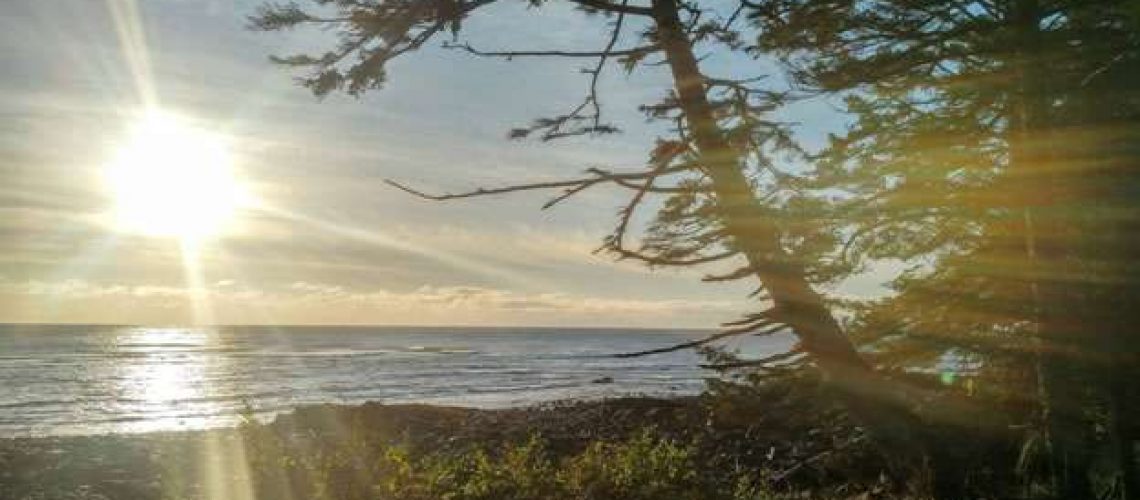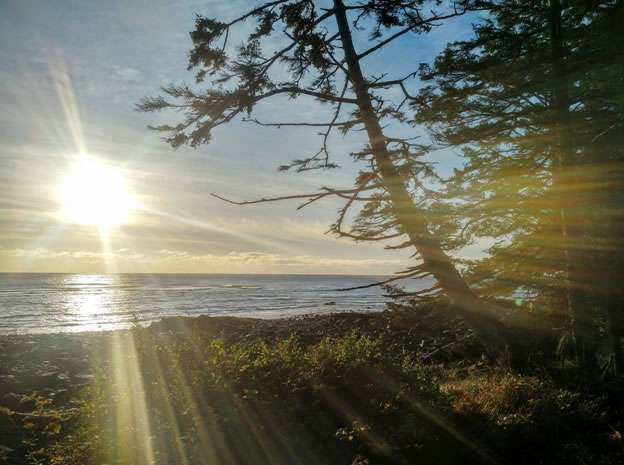
A BC Hydro vegetation manager and a contractor were reviewing a number of sites for a direct award vegetation maintenance contract on Haida Gwaii.

The contractor asked for a site review of a massive dead 60+cm DBH spruce included in the contract for removal.
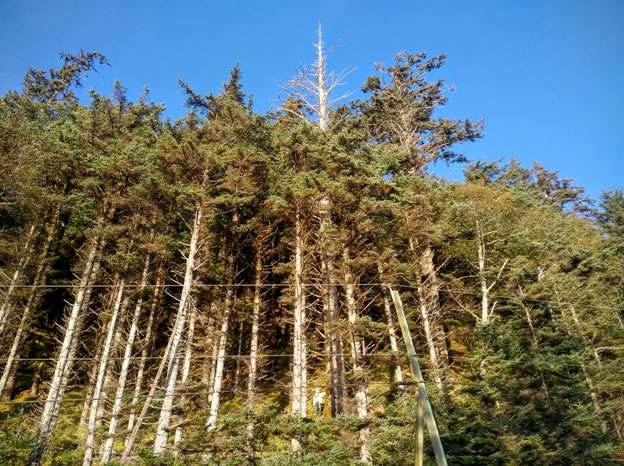
The large dead spruce tree was 200’ tall and had a 5’ DBH. Targets in the immediate vicinity of the tree included a single phase 25,000 volt power line, power pole and public highway.
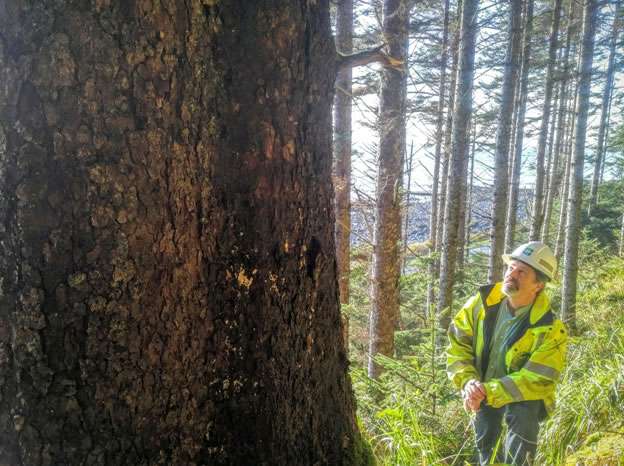
A thorough assessment of the tree’s condition was made, including the condition of the roots, the trunk wood and the canopy (what was left of it).
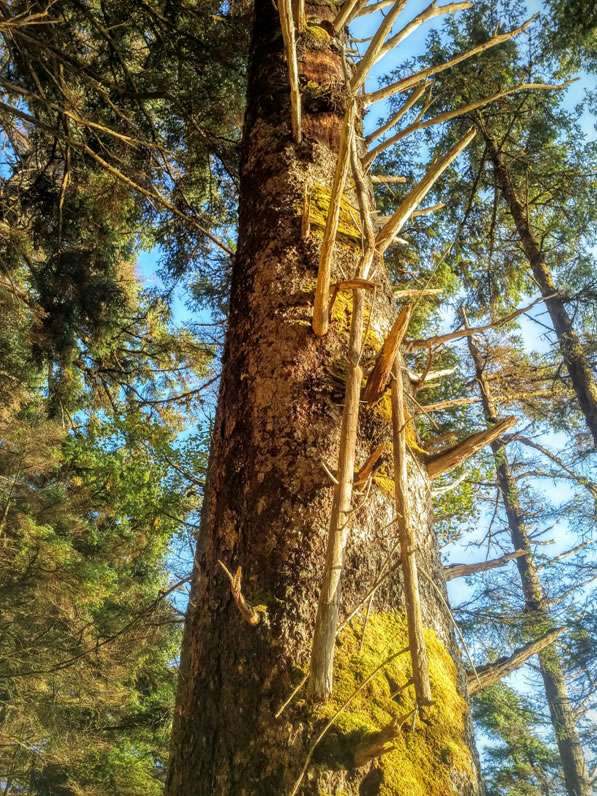
Numerous signs of advanced decay were noted, including large conks on the trunk, multiple dead and broken branches, and there were no signs of any live tissues.
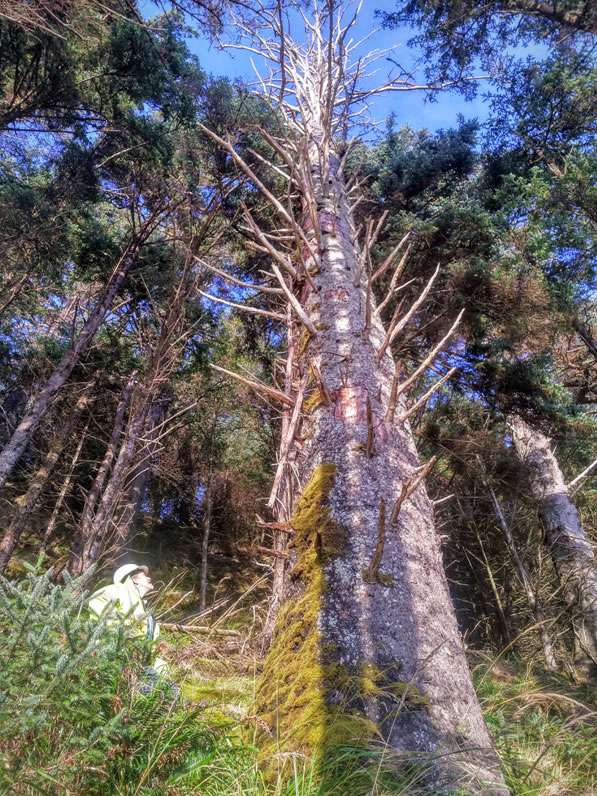
The tree was deemed not safe to climb, so an assessment of the immediate area around the tree was made to determine the best practices available for removal.
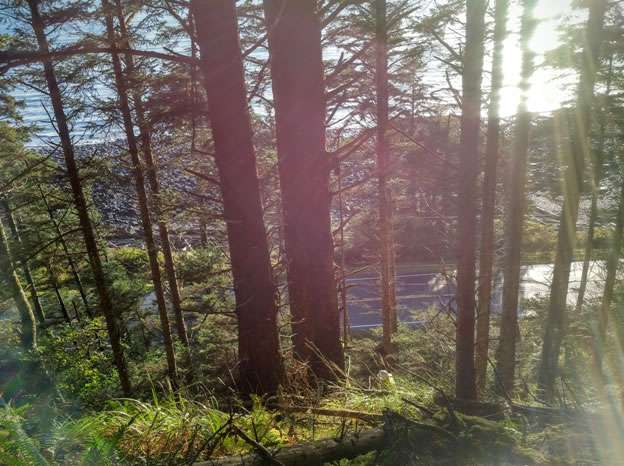
The ground sloped upward at a 71% grade. Falling the tree upward away from the lines was impossible to do safely due to the steep grade. There would be a high probability that the whole tree would slide back down the hill toward the CUA, the power pole and the highway. Falling the tree parallel with the lines was inadvisable given the large diameter of the tree and the possibility that the weight might push adjacent trees over onto the single phase power line and highway below. The only safe course of action was determined to be dropping the power lines and falling the tree down the bank across the highway.
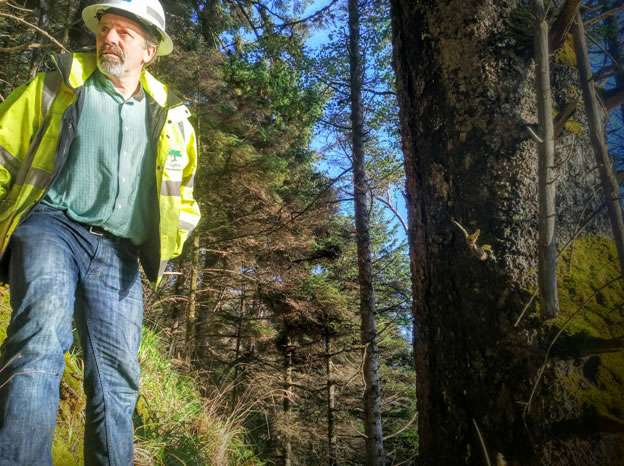
The angles and safety precautions that would be required to fall the large tree safely across the highway were discussed and assessed from various vantage points.
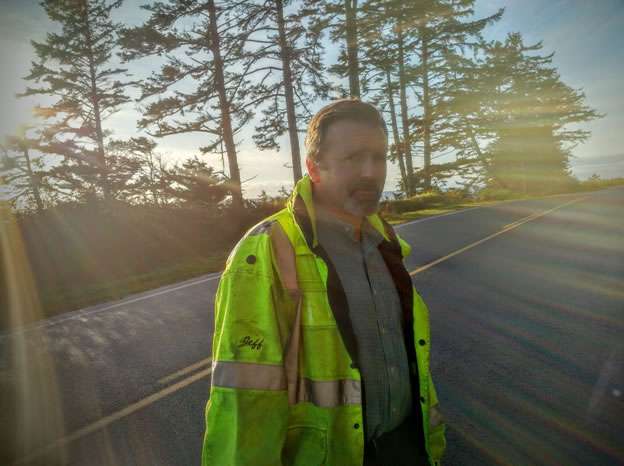
The BC Hydro manager and contractor did an on-site cost/benefit calculation on removing this tree. The removal would be costly and would have to include: a traffic control crew to set up a safe work zone on the highway; a utility tree crew to safely fall the tree; a line crew to drop the BC Hydro power lines; a cable crew to drop the Telus lines; a highways crew to make repairs to the highway; and a machine to assist in removing the wood and debris from the road. The benefits were small given that the power line fed a small number of customers. The tree was on the opposite side of the power lines from the prevailing winds making it more probable that in the event of partial or whole tree failure the tree would fall away from the power line. The decision not to remove the tree was a GOOD CATCH.
Some best practices were used in this Good Catch:
- If you are concerned about the safety of a site, ask for help
- Always thoroughly assess a hazard tree and the surrounding area
- Discuss various work plans to facilitate the safe completion of the work
- Use a second qualified worker to assist in the assessment
- Calculate the costs vs benefits of removing the tree
- Determine the most probable path failure will take, does the tree lean away from the target? Does the prevailing wind blow the tree away from the target? Is removal necessary?

